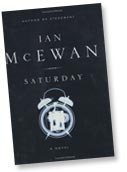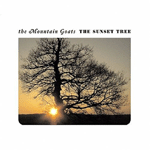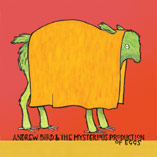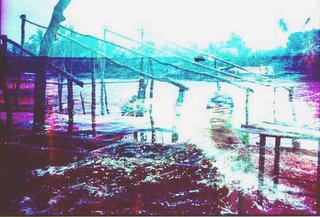Notable Books of 2005
Here are some interesting books from 2005. Some I've read, some I've read of, all of them worth checking out.

Saturday, by Ian McEwan
Got the Booker prize, it can't be that bad.
Killing Yourself to Live: 85% of a true Story, by Chuck Klosterman
While this moving meditation follows Klosterman visiting the graves of rock stars across the United States, the narrative force of the book is highly original. An interesting read, especially for music nerds.

Beasts of No Nation, by Uzodinma Iweala.
I was caught by the title, wondering if it was a referenece to Fela Kuti's music, and it may be. Fela's album was a righteous bird-flipping statement to oppressive African regimes, while Iweala's book looks closely at the psychology involved in muder and rape through the eyes of a single character's story, evoking the violence of African countries such as Rwanda and Uganda. This book has won over many critics, particularly as the author is only twenty-two years old.
Never Let Me Go, by Kazuo Ishiguro
An unnerving look at an English boarding school where clones are raised to donate their organs. Totally scary!

Mission to America, by Walter Kirn
A funny pop-culture novel about a man named Mason, member of the Aborigional Fulfilled Apostles, a close-knit tribe that goes back generations...in Montana. One member of his clan grows suddenly rich due to a reality TV game show, and the members set out to visit "Terrestria," the world outside their compund.
The Year of Magical Thinking, by Joan Didion
I haven't read this, but it crops up everywhere. Who is this Joan Didion? What does she write about? Here are some clues: "he writer who famously cut to passages from her psychiatric report here splices in her husband's autopsy and her daughter's CT scan. "(Village Voice); "Though it spares nothing in describing Didion's confusion, grief and derangement, is a work of surpassing clarity and honesty. It may not provide "meaning" to her husband's death or her daughter's illness, but it describes their effects on her with unsparing candor."(Washington Post); also it's apparently about 9-11.

Extremely Loud and Incredibley Close, by Jonathan Safran Froer
I almost saw JSF read at a bar in Seattle, but by the time I had got there, half an hour before the reading was scheduled, the place was packed and the line to get in stretched around the block. I was blown away by the intense interest this reading drew. Why don't popular younger authors like JSF do readings in bars more often? If done reasonably well, as this event was, it could be smashing. I did go back to the bar and caught a look at Jonathan from across the room as I had a drink. He was dressed neatly in a blazer and glasses and looked attentively as someone spoke to him whose book he was holding. The place was undergoing an odd shift, attempting to morph from reading into dance-party, but no one was drinking much and the music sounded like Balinese lounge music. A woman in a sequin dress kept starting to dance, getting embarrassed, and going back to her friends. She did it thrice while I was there for five minutes, perhaps she eventually succeeded in inspiring a Balinese blockparty. I'll never know, because my friend and I walked a block down to another bar to see if any bands were playing. I was pretty dissapointed at missing the reading, but bands at the second bar turned out to be Frog Eyes and Black Mountain, and the night was saved!
Poems of Catullus (Trans: Peter Green)
Only the best in bawdy Latin Lyrical poets.
Speaking of...here is a page of obscene Latin:
http://www.obscure.org/obscene-latin/vocabulary.html

Saturday, by Ian McEwan
Got the Booker prize, it can't be that bad.
Killing Yourself to Live: 85% of a true Story, by Chuck Klosterman
While this moving meditation follows Klosterman visiting the graves of rock stars across the United States, the narrative force of the book is highly original. An interesting read, especially for music nerds.

Beasts of No Nation, by Uzodinma Iweala.
I was caught by the title, wondering if it was a referenece to Fela Kuti's music, and it may be. Fela's album was a righteous bird-flipping statement to oppressive African regimes, while Iweala's book looks closely at the psychology involved in muder and rape through the eyes of a single character's story, evoking the violence of African countries such as Rwanda and Uganda. This book has won over many critics, particularly as the author is only twenty-two years old.
Never Let Me Go, by Kazuo Ishiguro
An unnerving look at an English boarding school where clones are raised to donate their organs. Totally scary!

Mission to America, by Walter Kirn
A funny pop-culture novel about a man named Mason, member of the Aborigional Fulfilled Apostles, a close-knit tribe that goes back generations...in Montana. One member of his clan grows suddenly rich due to a reality TV game show, and the members set out to visit "Terrestria," the world outside their compund.
The Year of Magical Thinking, by Joan Didion
I haven't read this, but it crops up everywhere. Who is this Joan Didion? What does she write about? Here are some clues: "he writer who famously cut to passages from her psychiatric report here splices in her husband's autopsy and her daughter's CT scan. "(Village Voice); "Though it spares nothing in describing Didion's confusion, grief and derangement, is a work of surpassing clarity and honesty. It may not provide "meaning" to her husband's death or her daughter's illness, but it describes their effects on her with unsparing candor."(Washington Post); also it's apparently about 9-11.

Extremely Loud and Incredibley Close, by Jonathan Safran Froer
I almost saw JSF read at a bar in Seattle, but by the time I had got there, half an hour before the reading was scheduled, the place was packed and the line to get in stretched around the block. I was blown away by the intense interest this reading drew. Why don't popular younger authors like JSF do readings in bars more often? If done reasonably well, as this event was, it could be smashing. I did go back to the bar and caught a look at Jonathan from across the room as I had a drink. He was dressed neatly in a blazer and glasses and looked attentively as someone spoke to him whose book he was holding. The place was undergoing an odd shift, attempting to morph from reading into dance-party, but no one was drinking much and the music sounded like Balinese lounge music. A woman in a sequin dress kept starting to dance, getting embarrassed, and going back to her friends. She did it thrice while I was there for five minutes, perhaps she eventually succeeded in inspiring a Balinese blockparty. I'll never know, because my friend and I walked a block down to another bar to see if any bands were playing. I was pretty dissapointed at missing the reading, but bands at the second bar turned out to be Frog Eyes and Black Mountain, and the night was saved!
Poems of Catullus (Trans: Peter Green)
Only the best in bawdy Latin Lyrical poets.
Speaking of...here is a page of obscene Latin:
http://www.obscure.org/obscene-latin/vocabulary.html














